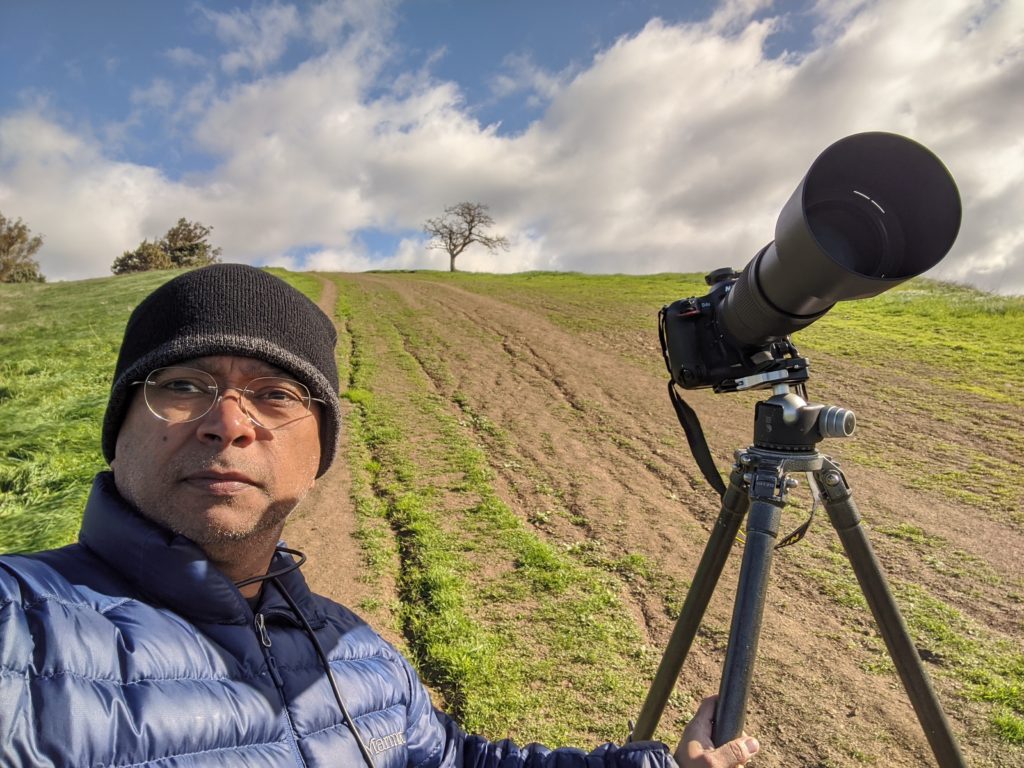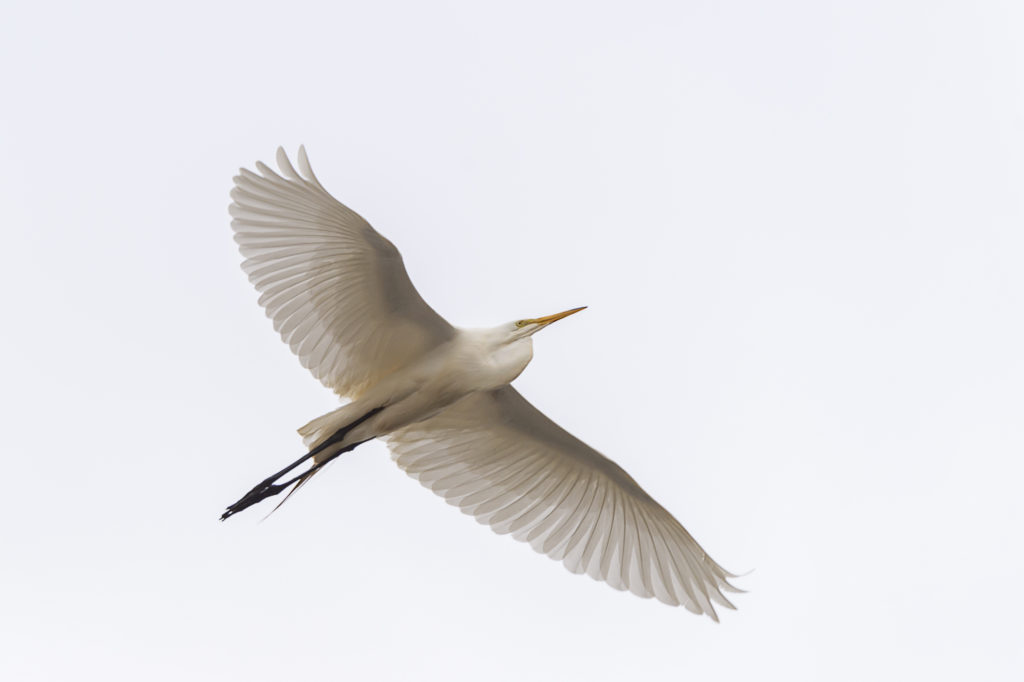People not familiar with wildlife photography, assume naively that just because I have a super-telephoto lens as shown below, I can zoom in and shoot a mole on a rat’s behind, a mile away.
This is not true.

So, how much can you zoom?
In other words, how far can a bird be, to be able to shoot it with sufficient quality, so that one can look at the resulting image and be able to see details (eyes, feather details etc)?
I am going to get a bit technical with high school physics.
The ratio of the “image size” to the “object size” is the same as the ratio of the “lens focal length” and the “object distance” from the lens.
Let’s define the terms contained here.
Image Size – The size of the image on the sensor. In 35mm photography, the size of the sensor is 24mm x 36mm. In a horizontal image, if a bird’s image should occupy half the height of the sensor, the image size is 12mm. If the length of the bird along the length of the sensor should occupy half the sensor’s length, that should be 18mm.
Object Size – This is the height or length of the bird in real life. For a sparrow, the length is around 150mm and the wingspan is around 200mm.
Lens Focal Length – When you buy a lens, it is mainly differentiated by its focal length, although the other differentiating characteristic is its maximum aperture. Discussing max aperture is beyond the scope of this post. So, for my Nikkor 200-500mm lens, the focal length is variable between 200mm and 500mm.
Object Distance – This is the distance between the bird and the lens. This is the answer we are seeking – “how far can you zoom?”.
Having established this much, it is now easy to make the necessary calculations. To illustrate, let us take a few examples.
Example 1: With my 400mm lens, how close was I to this snowy egret, when I made this image?

Let us estimate that the wingspan of this bird image is about half the horizontal length of the sensor and therefore “Image Size” = 18mm. Snowy Egret wingspan is roughly 40 inches or 1000mm. Therefore “Object Size” = 1000mm. I used a focal length of 400mm.
Therefore, we can now easily calculate the bird distance as follows:
Distance of bird = Focal length x Object Size / Image Size
Distance of bird = 400mm x 1000mm / 18mm
Distance of bird = 22,222 mm = 22 meters.
Example 2: How far can a sparrow be to fill the frame the same way as example 1?
Let’s use the same 400mm. The sparrow wingspan is 200mm. Therefore:
Distance of sparrow = 400mm x 200mm / 18mm
Distance of sparrow = 4,444 mm = 4.4 meters.
Example 3: In the following image, how close was I when I photographed these american white pelicans?

Estimate the bird image size to be 10% of the sensor length or 3.6mm. Assume the same 400mm lens. These pelicans are roughly 60 inches or 1500mm in length. The calculation is straightforward:
Distance of these birds = 400mm x 1500mm / 3.6mm
Distance of these birds = 166,667mm = 167 meters.
Example 4: What if you used a 600mm lens, instead of 400mm?
You can now have 50% additional distance between you and the flying bird.
Example 5: What if you used a 200mm lens, instead of 400mm?
Your distance to the bird needs to be halved.
Example 6: What lens would you need, to fill half the frame sensor with a sparrow that is 100 meters or 100,000mm away?
The calculation would be:
Focal length needed = 100,000mm x 18mm/200mm = 9000mm.
The longest lens that is commercially available today is the 800mm lens. That lens costs about $ 12,000 or more. There is no 9000mm lens. Your best bet is to master techniques to get closer to the sparrow.
Example 7: What if I used a 1.5x crop sensor (an APS-C sensor), which is roughly 16mm x 24mm?
You will get additional 50% distance from the bird.








